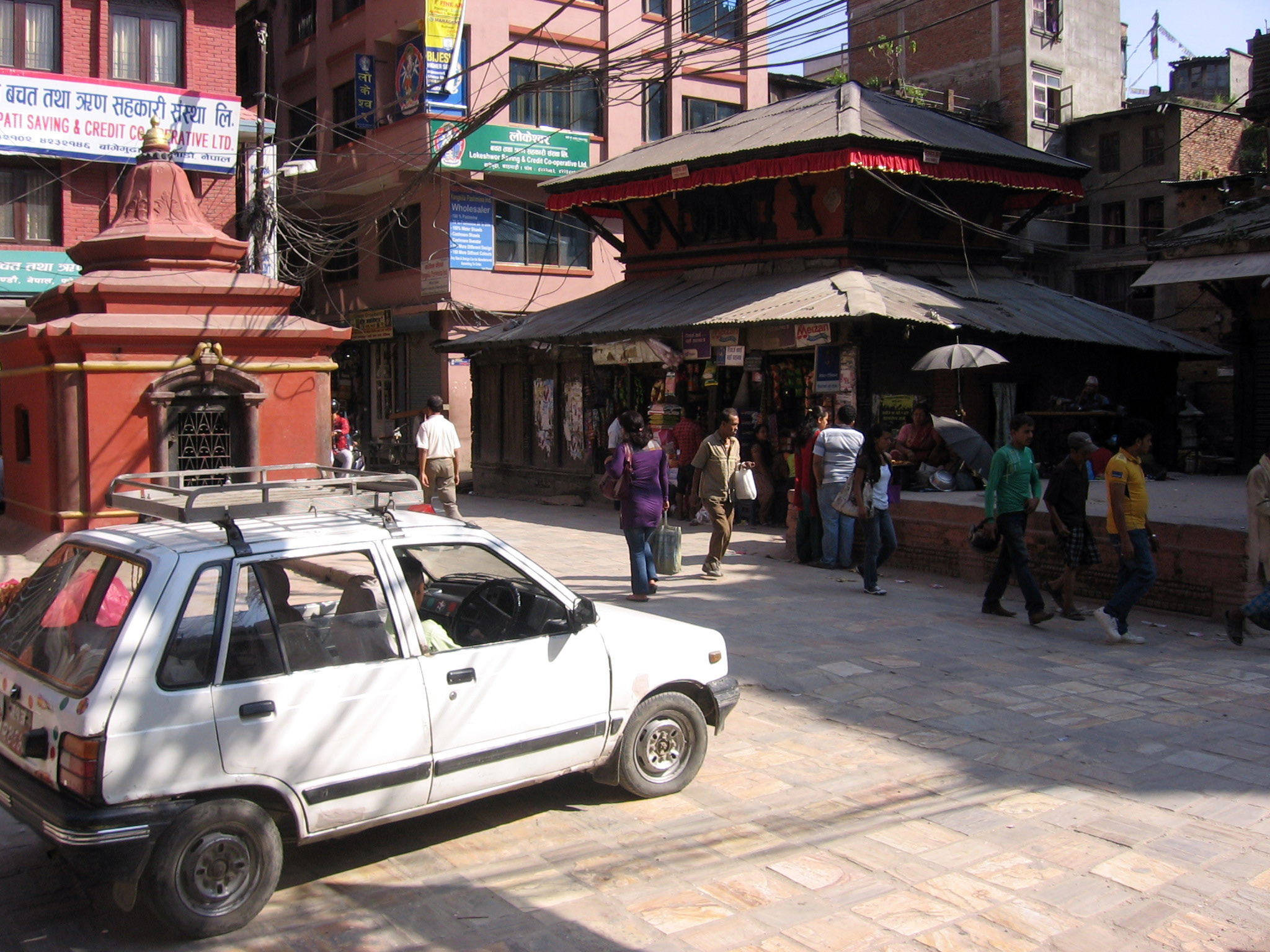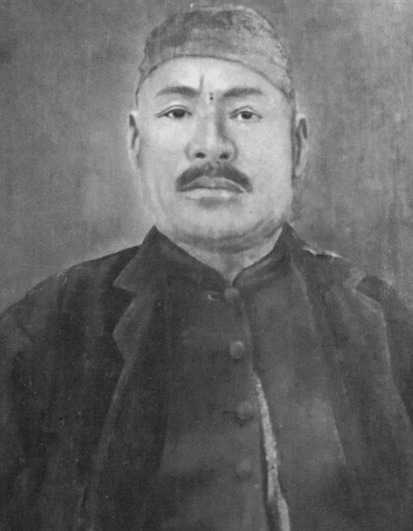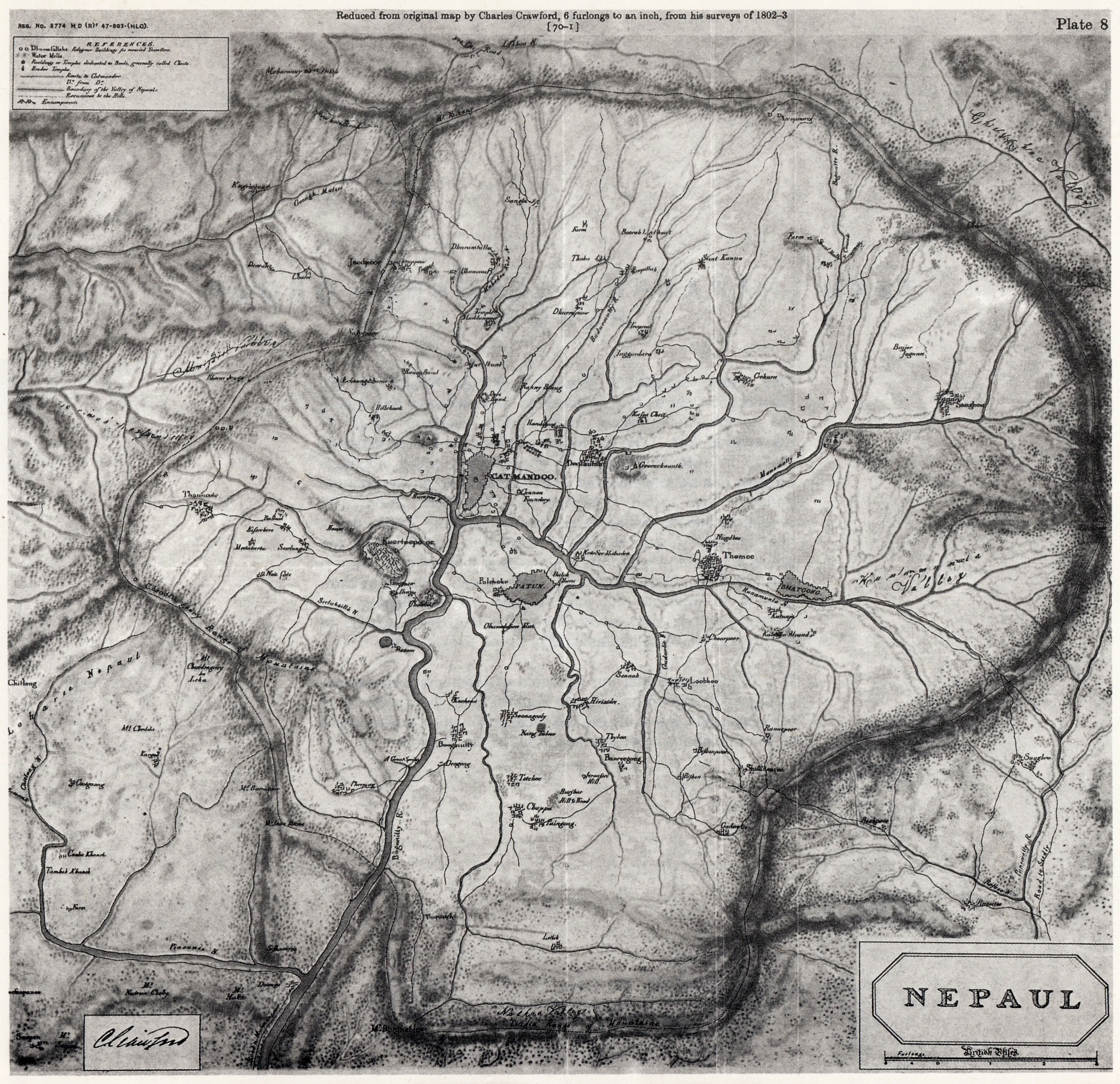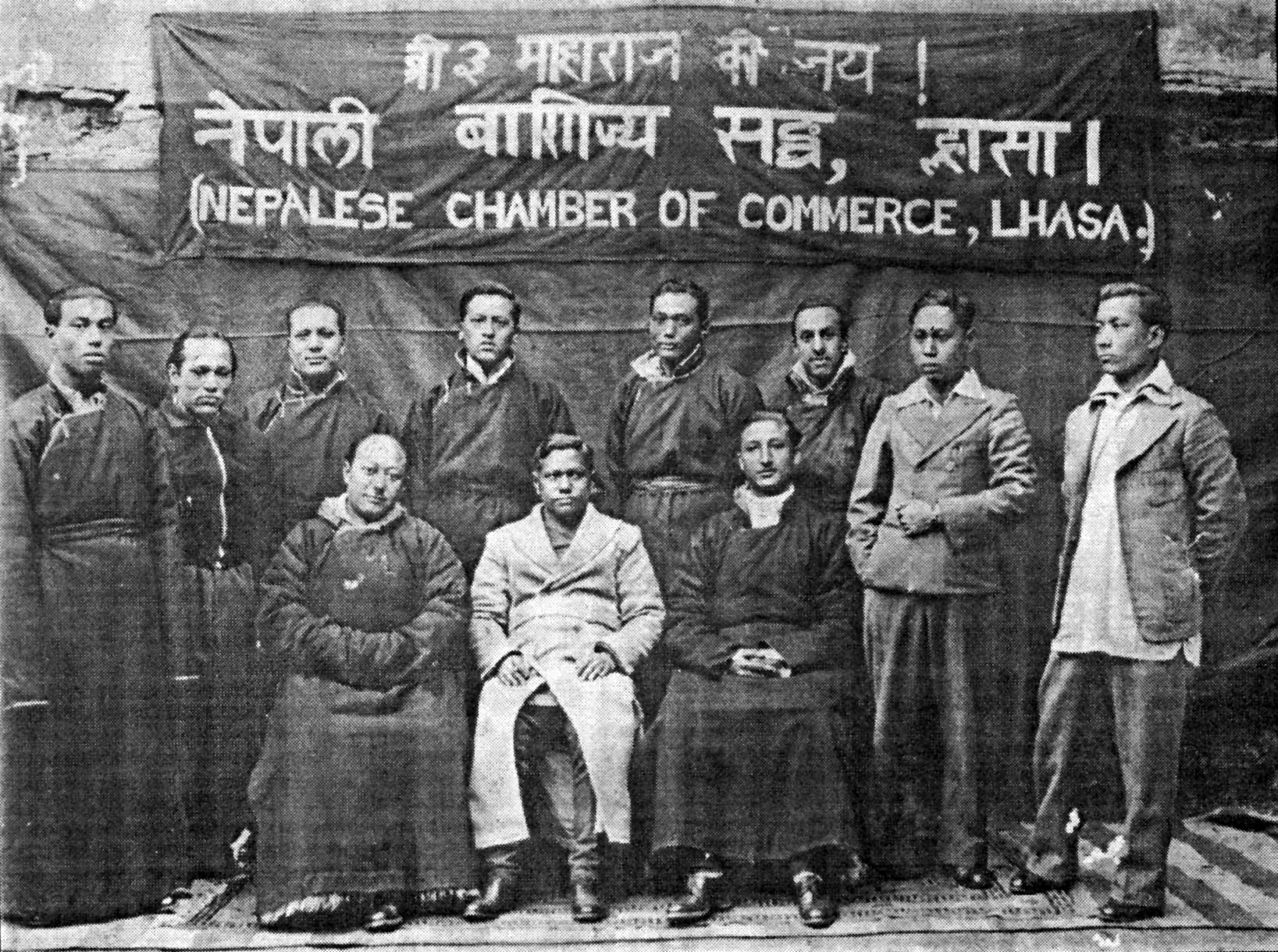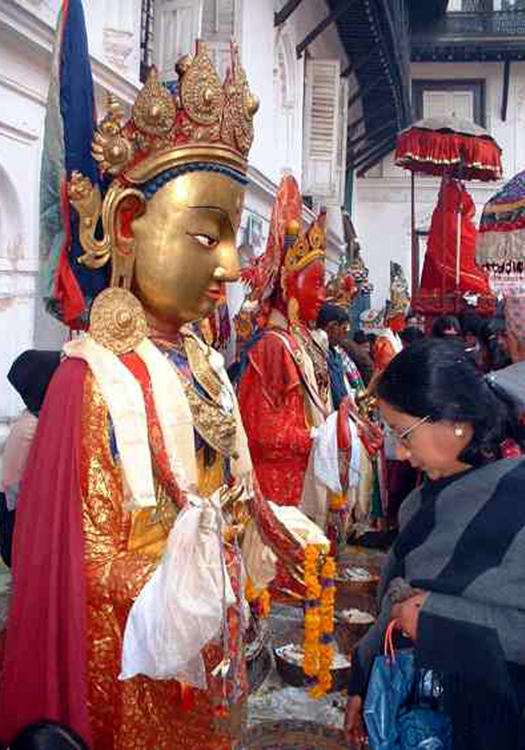|
Sthapit
Sthāpit ( ne, स्थापित) is a Nepalese caste from the Newa people of the Kathmandu Valley in Nepal. Sthapits are part of the Uray group which includes Tuladhar, Kansakar, Tamrakar, Bania, Sindurakar, Selalik Kasthakar and other castes. Their religion is Newar Buddhism and their mother tongue is Nepal Bhasa. Traditional Sthapit neighborhoods in Kathmandu are Thaymaru, Bhindyah, Makhan, Mikhadwan and Lagan. Makhan contains the largest population of Sthapits. Traditional occupation Sthapit means "establish" in Sanskrit, and their traditional occupation, as per the division of labor laid down from ancient times, has been carpentry, architecture and engineering. They were skilled artisans, and were engaged in designing and building palaces, houses, temples and machinery. Among the notable names, Jogbir Sthapit (alternative names: Joglal Sthapit, Bhajuman) was the architect who built Narayanhiti Palace in Kathmandu, the palace of the Shah dynasty, in 1886. He wa ... [...More Info...] [...Related Items...] OR: [Wikipedia] [Google] [Baidu] |
Jogbir Sthapit
Jogbir Sthāpit ( ne, जोगवीर स्थापित) (alternative names: Joglāl Sthāpit, Bhāju Mān Sthāpit and Jogbir Nāyo) (1838–1926) was a renowned Nepalese architect best known as the designer of Narayanhiti Royal Palace and renovator of the Swayambhu stupa in Kathmandu. He was a master of both Western and traditional Nepalese building styles. Early life Jogbir was born in Kathmandu into the hereditary Newar caste of builders. His family name Sthapit means "establish" in Sanskrit. His father's name was Asha Maru Sthapit and his mother was Jogawati Sthapit. He married Dan Maya after the death of his first wife Gyan Thakun. Sthapit's ancestral neighborhood Thāymaru is located in the central part of the city. Narayanhiti Palace The construction of Narayanhiti Palace in 1886 is among the highlights of Sthapit's career. Narayanhiti was built on the grounds of the palace of Rana prime minister Ranodip Singh Kunwar after it was demolished following his assassina ... [...More Info...] [...Related Items...] OR: [Wikipedia] [Google] [Baidu] |
Nirgun Sthapit
Nirgun Sthapit ( ne, निर्गुण स्थापित) (8 July 1968 - 6 April 1990) was a fighter for democracy who was martyred during the 1990 People's Movement in Nepal. The movement put an end to absolute monarchy and the repressive Panchayat system, and reinstated multiparty democracy in the country. College freshman Sthapit was shot by security forces during a street demonstration at Bhotahiti, a market street in central Kathmandu. He was rushed to nearby Bir Hospital which was crowded with wounded demonstrators, and died shortly after. Sthapit was born to father Krishna Das and mother Maiya Sthapit in Kathmandu. He was a student of Intermediate in Commerce at Public Youth Campus, Kathmandu. The Panchayat system was established by King Mahendra in 1960 after ousting Nepal's first democratically elected government and dissolving Parliament. He suspended the constitution, imprisoned the prime minister and key ministers and banned political parties. A new constit ... [...More Info...] [...Related Items...] OR: [Wikipedia] [Google] [Baidu] |
Uray (caste Group)
Urāy ( ne, उरे) (alternative names: Udaaya, Udās) is a Newar Buddhist merchant caste of Kathmandu in Nepal. They are a prominent community in the business and cultural life of Kathmandu. Urays have played key roles in the development of trade, industry, art, architecture, literature and Buddhism in Nepal and the Himalayan region. The name Uray is said to have been derived from the Sanskrit term " upāsaka" which means "devout layman". The Uray follow Newar Buddhism and speak the Newar language as their mother tongue. They are believers in non-violence in personal relations and ritual practices. History An early reference to the Uray is contained in a 17th-century journal kept at the Buddhist monastic courtyard of Jana Baha, Kathmandu. Dated Nepal Sambat 763 (1643 AD), the journal entry states that King Laxmi Narsingh Malla has asked all the Urays to attend a religious service at Asan. Urays are also known for their history as traders on the Silk Road. Operating out ... [...More Info...] [...Related Items...] OR: [Wikipedia] [Google] [Baidu] |
Newar Caste System
Newar caste system is the system by which Newārs, the historical inhabitants of Kathmandu Valley, are divided into groups on the basis of Vedic varna model and divided according to their hereditary occupations. First introduced at the time of the Licchavis (A.D. 300 – c. 879), the Newar caste system assumed its present shape during the medieval Malla period (A.D. 1201–1769). The Newar caste structure resembles more closely to North India and Madheshis than that of the Khas 'Parbatiyas' in that all four Varna (Brahmin, Kshatriya, Vaishya and Shudra) and untouchables are represented. The social structure of Newars is unique as it is the last remaining example of a pre-Islamic North Indic civilisation in which Buddhist elements enjoy equal status with the Brahmanic elements. History of Assimilation According to various historical sources, even though the presence of ''varna'' and caste had been a known element in the social structure of the Kathmandu Valley since the Li ... [...More Info...] [...Related Items...] OR: [Wikipedia] [Google] [Baidu] |
Newar
Newar (; new, नेवार, endonym: Newa; new, नेवा, Pracalit script:) or Nepami, are the historical inhabitants of the Kathmandu Valley and its surrounding areas in Nepal and the creators of its historic heritage and civilisation. Page 15. Newars form a linguistic and cultural community of primarily Indo-Aryan and Tibeto-Burman ethnicities following Hinduism and Buddhism with Nepal Bhasa as their common language. Newars have developed a division of labour and a sophisticated urban civilisation not seen elsewhere in the Himalayan foothills. Newars have continued their age-old traditions and practices and pride themselves as the true custodians of the religion, culture and civilisation of Nepal. Newars are known for their contributions to culture, art and literature, trade, agriculture and cuisine. Today, they consistently rank as the most economically and socially advanced community of Nepal, according to the annual Human Development Index published by UNDP. Nep ... [...More Info...] [...Related Items...] OR: [Wikipedia] [Google] [Baidu] |
Newa People
Newar (; new, नेवार, endonym: Newa; new, नेवा, Pracalit script:) or Nepami, are the historical inhabitants of the Kathmandu Valley and its surrounding areas in Nepal and the creators of its historic heritage and civilisation. Page 15. Newars form a linguistic and cultural community of primarily Indo-Aryan and Tibeto-Burman ethnicities following Hinduism and Buddhism with Nepal Bhasa as their common language. Newars have developed a division of labour and a sophisticated urban civilisation not seen elsewhere in the Himalayan foothills. Newars have continued their age-old traditions and practices and pride themselves as the true custodians of the religion, culture and civilisation of Nepal. Newars are known for their contributions to culture, art and literature, trade, agriculture and cuisine. Today, they consistently rank as the most economically and socially advanced community of Nepal, according to the annual Human Development Index published by UNDP ... [...More Info...] [...Related Items...] OR: [Wikipedia] [Google] [Baidu] |
Tuladhar
Tulādhar (Devanagari: तुलाधर) is a Nepali/Nepalese caste from the Newar community of the Kathmandu Valley in Nepal. The name Tuladhar is derived from the Sanskrit words "tula" (weighing scale) and "dhar" (possessor), thus meaning scale-bearer or in general, merchant. Tuladhars belong to the Uray group which includes Kansakar, Tamrakar, Sthapit, Bania, Sindurakar, Selalik and other castes. They follow Newar Buddhism and speak Nepal Bhasa as a mother tongue. Traditional Tuladhar neighborhoods are Asan ( new, असं ne, असन), Nyata () (also known as Naradevi) and Jhwa Baha in Kathmandu where they hold a number of cultural performances annually including religious dances and music concerts. Traditional occupation According to the division of labor laid down from ancient times in Newar society, business is the traditional occupation of Tuladhars. They are best known for their history as trans-Himalayan traders conducting trade between Nepal, India and Tibet. ... [...More Info...] [...Related Items...] OR: [Wikipedia] [Google] [Baidu] |
Kansakar
Kansakār () or Kasāh (कसाः) is a Nepalese caste group belonging to the Newar community of the Kathmandu Valley in Nepal. In Sanskrit, Kansakar means bronze worker, and their traditional occupation has been metal working and trading. Today, they are merchants, industrialists and professionals. They are part of the Urāy (उराय्) group which includes Tuladhar, Tamrakar, Sthapit, Bania, Sindurakar, Selalik and other castes. The Urāy are a community of high-caste Buddhist merchants, and their family names indicate artisan and mercantile specialists. Their religion is Newar Buddhism and mother tongue Nepal Bhasa. Kansakars have been traditionally based in Kel Tol in the historical section of Kathmandu where they play a major cultural role. The neighborhood is famed for the sacred courtyard of Jana Baha (Machhendra Bahal) where the central temple houses an image of Aryavalokitesvara (Sacred Avalokiteśvara), a Buddhist deity popularly known as Jana Baha Dyah or Whi ... [...More Info...] [...Related Items...] OR: [Wikipedia] [Google] [Baidu] |
Samyak
Samyak ( ne, सम्यक) is an almsgiving Buddhist festival celebrated in the Kathmandu Valley in Nepal. During the ceremony which is held on a large open ground, hundreds of Dīpankara Buddha images are assembled, and gifts of different types of food are made to the Buddha images and the Buddhist community. Samyak is the most spectacular Newar Buddhist celebration. It is observed at different intervals in the three cities of the valley -- every 12 years in Kathmandu, every five years in Lalitpur and annually in Bhaktapur. The first documented Samyak festival in Kathmandu took place in 1015 AD (135 Nepal Era). The festival brings together a wide cross-section of Newar society, including priests, artisans, traders, musicians and farmers. Each group has a defined role designed to highlight social harmony. The ceremony celebrates the practice of giving to the Buddhas and monks in the Newar Buddhist tradition. The Samyak festival in Kathmandu is held at Kathmandu Durbar S ... [...More Info...] [...Related Items...] OR: [Wikipedia] [Google] [Baidu] |
Dipankara Buddha
Dipankara (Pali: ''Dīpaṅkara''; Sanskrit: ', "Lamp bearer") or Dipankara Buddha is one of the Buddhas of the past. He is said to have lived on Earth four asankheyyas and one hundred thousand kappas ago. According to some Buddhist or folk traditions, Dipankara was a previous Buddha who attained Enlightenment eons prior to Gautama Buddha, the historical Buddha. Generally, Buddhists believe that there has been a succession of many Buddhas in the distant past and that many more will appear in the future. Dipankara was one of these previous Buddhas, while Gautama Buddha was the current and most recent Enlightened one, and Maitreya will be the next Buddha in the distant future. Chinese Buddhism honors Dipankara as one of many Buddhas of the past. Dipankara, Gautama, and Maitreya are "the Buddhas of Three Times" in Yiguandao. Iconography Dipankara is generally represented as a sitting Buddha, but his depictions as a standing Buddha are common in China, Thailand, and Nepal; w ... [...More Info...] [...Related Items...] OR: [Wikipedia] [Google] [Baidu] |
Social Groups Of Nepal
Social organisms, including human(s), live collectively in interacting populations. This interaction is considered social whether they are aware of it or not, and whether the exchange is voluntary or not. Etymology The word "social" derives from the Latin word ''socii'' ("allies"). It is particularly derived from the Italian ''Socii'' states, historical allies of the Roman Republic (although they rebelled against Rome in the Social War of 91–87 BC). Social theorists In the view of Karl MarxMorrison, Ken. ''Marx, Durkheim, Weber. Formations of modern social thought'', human beings are intrinsically, necessarily and by definition social beings who, beyond being "gregarious creatures", cannot survive and meet their needs other than through social co-operation and association. Their social characteristics are therefore to a large extent an objectively given fact, stamped on them from birth and affirmed by socialization processes; and, according to Marx, in producing and reproducin ... [...More Info...] [...Related Items...] OR: [Wikipedia] [Google] [Baidu] |
